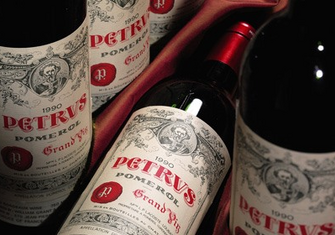Every investor wants to understand the value of their investment wines and what factors influence price performance. The fine wine market has evolved significantly over the last two decades with greater efficiency, transparency and access to key information upon which investment wines can be valued. This has led to improved investor confidence and the involvement of institutional investors and wealth managers in this exciting market. We look at the key factors that influence the investment wine valuation.
What factors influence the Valuation of Investment Wines?
- Brand – the profile of the fine wine estate or chateau and their market position as producer of the finest quality wines, based on the vineyard’s terroir, heritage, viticultural expertise and investment.
- Critical opinion of the leading fine wine critics and the quality scores they attribute to the wines.
- Vintage quality – Prime – the highest average quality scored vintages can add an overall premium to prices. Mid and Off vintages can also offer value and diversification potential.
- Age – as a wine matures it improves in quality and price generally rises accordingly. The wine’s drinking window is an important factor.
- Rarity – the highest quality wines with very low production levels can command extraordinary prices, eg Burgundy’s DRC and Napa’s Screaming Eagle, and as wines are consumed, supply becomes increasingly rare and more valuable.
- Provenance and storage – Provenance is a key factor determining quality and value. Fine wine acquired direct from the Chateau or producer’s cellar offers the very best provenance and this can command a premium value. Most investment wines are kept in a specialist bonded storage facility to guarantee the optimum conditions to protect quality and value. A clear ‘audit trail’ of ownership and storage is an important consideration when buying investment wines.
- Original Wooden Case (OWC) and bottle condition – the state or quality of the investment wine packaging and label will also affect price. Ideally, investment wines should have perfect packaging in their original wooden case with pristine labels and a condition report should be requested.
- Region – Regional trends can affect fine wine values and portfolios are now diversified by region to optimise returns. The key wine-growing regions for investment wines are Bordeaux, Burgundy, Champagne and Rhone in France, Italy’s Tuscany and Piedmont, the Douro in Spain, Napa and Sonoma in California and Barossa Valley, Australia.
- Currency – fine wine can be used to hedge currencies as a global asset
- Wine market strength – the general performance of the fine wine market can influence value. Fine wine as an asset is considerably more stable than equities and financial markets. Fine wine tends to perform well during periods of economic stress or recession and can be used to protect capital. For example, throughout the Covid-19 pandemic, fine wine investments have maintained stable growth.
- Political events – can influence fine wine prices. For example the US tariffs imposed in 2019 inflicted an additional 25% margin on European still wines being imported by US merchants – First Growth wines from Burgundy and Bordeaux were particularly affected, as the prohibitive additional cost saw their prices drift prior to the pandemic.
- Tax status –a primary reason for investing in wine is the favourable tax treatment – profits made on sale do not generally attract CGT. For additional tax advantages, investment wines should ideally be stored in a specialist bonded tax facility to ensure the ‘off-shore’ tax treatment of the wine. Accordingly, VAT and Duty does not apply unless the owner removes the wine from bond.
- Costs – as with all investments there are costs to be considered when looking at returns – these include storage, insurance and management fees for a merchant or specialist fine wine investment advisor.
All of the factors listed above influence the value of fine wine and most investors will be guided by a fine wine investment specialist when adding investment wines to their portfolio.
Liv-ex and fine wine valuations
Liv-ex, the fine wine market equivalent to a ‘stock exchange’, utilises the trading information from more than 500 global trade members to provide market analysis and price data to guide the market on value and provide liquidity. The Liv-ex pricing information is used by merchant members, financial organisations and fine wine investment specialists such as Vin-X, to guide their clients on valuations of wine investments. Key benchmarks such as the Liv-ex 100 are also reported on by financial media, such as Reuters and Bloomberg.
Liv-ex indices measure regional wine performance and overall trends and guide the market on value whilst its exchange function provides liquidity. Vin-X as a trading member of Liv-ex and fine wine investment specialist utilises this data and further analysis to advise their clients which investment wines offer strong opportunities for growth and to provide fine wine portfolio valuation services.
To learn more and speak to a fine wine investment specialist, contact the Vin-X team on 0203 384 2262.

